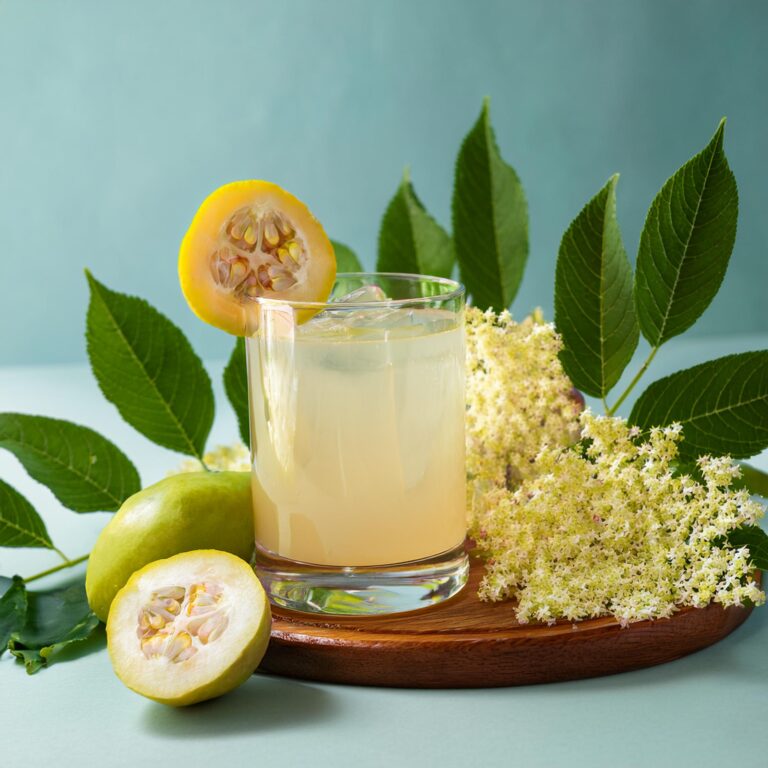Curuba and elderflower are two ingredients that may not be commonly known but offer a unique combination of flavors when blended together. Curuba, often referred to as “banana passionfruit,” is a tropical fruit with a tangy, citrus-like flavor, while elderflower is a delicate, floral ingredient used in drinks, desserts, and syrups. When paired, these two create a refreshing and exotic profile perfect for cocktails, mocktails, and culinary innovations.
What is Curuba?
Curuba (Passiflora tripartita) is native to the Andes region and is known for its bright orange or yellow elongated shape, resembling a small banana. It belongs to the passionfruit family, and its flavor is often described as a cross between a banana and a passionfruit, with a citrusy tang and tropical sweetness.
Curuba is packed with nutrients like vitamin C, fiber, and antioxidants, making it both a flavorful and healthy choice in the kitchen. It’s commonly used in South American cuisine for juices, smoothies, and desserts.
For more about curuba’s benefits, check out Healthline’s article on passionfruits.
What is Elderflower?
Elderflower comes from the elder tree and has been used for centuries for its medicinal and culinary properties. The blossoms are small, white, and aromatic, with a flavor that’s both floral and slightly fruity. Elderflower is widely known for its use in syrups, cordials, and liqueurs like the famous St-Germain.
Elderflower is prized for its anti-inflammatory and antioxidant properties, making it not only a delicious but also a beneficial ingredient in teas, beverages, and culinary dishes.
The Combination of Curuba and Elderflower
When combined, curuba and elderflower create a delightful balance of tropical tang and floral sweetness. Their combined profile makes them ideal for a variety of uses:
- Cocktails and Mocktails: The citrusy notes of curuba blend beautifully with the delicate floral flavor of elderflower, making them perfect for refreshing drinks. For example, a curuba-elderflower cocktail with sparkling water or champagne is a light, aromatic beverage that’s ideal for summer.
- Desserts: The combination of curuba’s sweet tanginess with elderflower syrup or cordial can elevate desserts like sorbets, panna cotta, or fruit tarts.
- Smoothies and Juices: You can blend curuba with elderflower syrup for a tropical and fragrant twist to your regular smoothie or juice.
For more drink inspiration using elderflower, visit BBC Good Food’s elderflower recipe section.
Health Benefits of Curuba and Elderflower
- Rich in Antioxidants: Both curuba and elderflower are known for their high antioxidant content, which can help protect the body from oxidative stress and inflammation.
- Immune Boosting: The vitamin C in curuba, combined with the immune-supporting properties of elderflower, makes this a powerful combination for improving overall health.
- Digestive Support: Curuba is high in fiber, aiding digestion, while elderflower is often used in herbal medicine to support digestive function.
Where to Find Curuba and Elderflower
While elderflower products like syrups and cordials are widely available online and in specialty food stores, curuba can be more difficult to find outside of South America. However, you may find curuba in international or Latin American grocery stores, or order it online from tropical fruit suppliers.
For elderflower syrups and cordials, you can explore options on Amazon or St-Germain’s official website.
Conclusion
The combination of curuba and elderflower offers a fresh and exotic pairing that can elevate beverages, desserts, and more. Whether you’re experimenting with new cocktail recipes or looking for ways to incorporate unique ingredients into your culinary creations, the tangy sweetness of curuba and the delicate floral notes of elderflower provide a perfect match.



